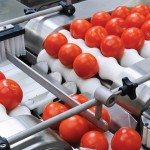Eaton Cold Weather Parameter
Eaton adjustable frequency drive products implemented an Eaton cold weather parameter functionality. The Eaton cold weather parameter function will provide the ability of the drive to function down below the initial rated temperature with a safe cost effective way to perform warming of both the motor and the drive cabinet.TheEatonDG1 adjustable frequency drive has a parameter group that supplys a selectable AC voltage to the motor at a very low frequency for a desired period of time and also lowers the temperature fault level.
This design uses the current draw through the IGBT modules to warm up the unit temperature by sending a 0.5Hz output frequency to the motor. The drives standard low temperature fault point is -10C which in most applications this is sufficient. In extreme temperature regions that often reach below this point, this can cause a fault, preventing operation of the drive. With the cold weather functionality enabled, the trip point is taken from a -10C fault level and moves it down to -30C with an alarm trip point at -20C. Therefore, the adjustable frequency drive will start the motor in a normal operational mode when the unit temperature is above the -20C level. If the drives unit temp is between -20C and -30C and the drive is stopped, when the run command is given the drive will go into the cold weather warm up feature to enable the motor to start when it reaches -20C.
Eaton Cold Weather Parameter Setup
There are four Eaton cold weather parameter options that are used to perform the cold weather protection functionality with the primary one being the under temperature fault condition setting. These parameters provide a safe way to warm up the drive instead of enabling full voltage output in cold environments. Each of these settings is described in detail below:
P9.23: Unit Under Temp Protection This parameter is used to define the function of the unit under temperature which is the highest drive heat sink temperature taken from the IGBT gate and a thermal temperature sensor in the power board. This parameter comes defaulted as a Fault but can be changed to No Action, a Warning, or Fault and Coast to a stop. To use the cold weather warm up feature, this parameter should be left on either one of the Fault actions. The No Action and Warning will allow the drive to start and run up to the set reference when the start command is given. This could potentially damage the capacitors and IGBT module.
P9.39: Cold Weather Mode This parameter is used to enable the cold weather warm up fea- ture when the Unit Under Temp Protection is set to one of the fault conditions. With this enabled, it causes the unit temperature trip to be adjusted from -10C to -30C. In addition, it activates a warm up sequence when the unit temperature is between -30C and -20C. When a run com- mand is given, the output frequency will be set to 0.5 Hz and run for a selectable voltage percent- age and time. It will also indicate the drive is in the mode with an Alarm 90 Cold Weather Warm in this operational state. Once temperature goes above -20C, the drive will ramp up to the set ref- erence value. If the temperature does not rise above -20C in the specified time, the drive will go into a Fault F13 Under Temp Fault which can be reset and the sequence could be repeated.
p9.40: Cold Weather Voltage Level This parameter is used to select the percentage of volt- age output the drive will provided at 0.5Hz when in the cold weather warm up mode. This value can be set from 0 to 20% of the motor rated voltage setting in the drive. This value should be set based off the ambient temperature and how quickly the user would like the drive to warm up. A higher voltage will cause more current to flow through the motor heating it up faster, but this also can cause additional heating which can cause increased winding wear over long periods of time. It is recommended that the voltage level be set to the lowest level that will effectively meet the users application requirements.
P9.41: Cold Weather Time Out This parameter is used to select the time limit for the drive to run at the 5Hz level at the selected voltage. This time can be set from 0 to 10 minutes, the longer the time the more likely the drive will warm itself up to a starting condition. However, as the time is increased, the motor life may be reduced due to significant heating of the motor windings over long periods of time. It is recommended that the voltage level be set to the lowest level that will effectively meet the users application requirements.
To learn more about the Eaton cold weather parameter function, visit the Eaton Website. For Eaton drive repair and Eaton drive replacement quotes, contact Precision Electric, Inc.








